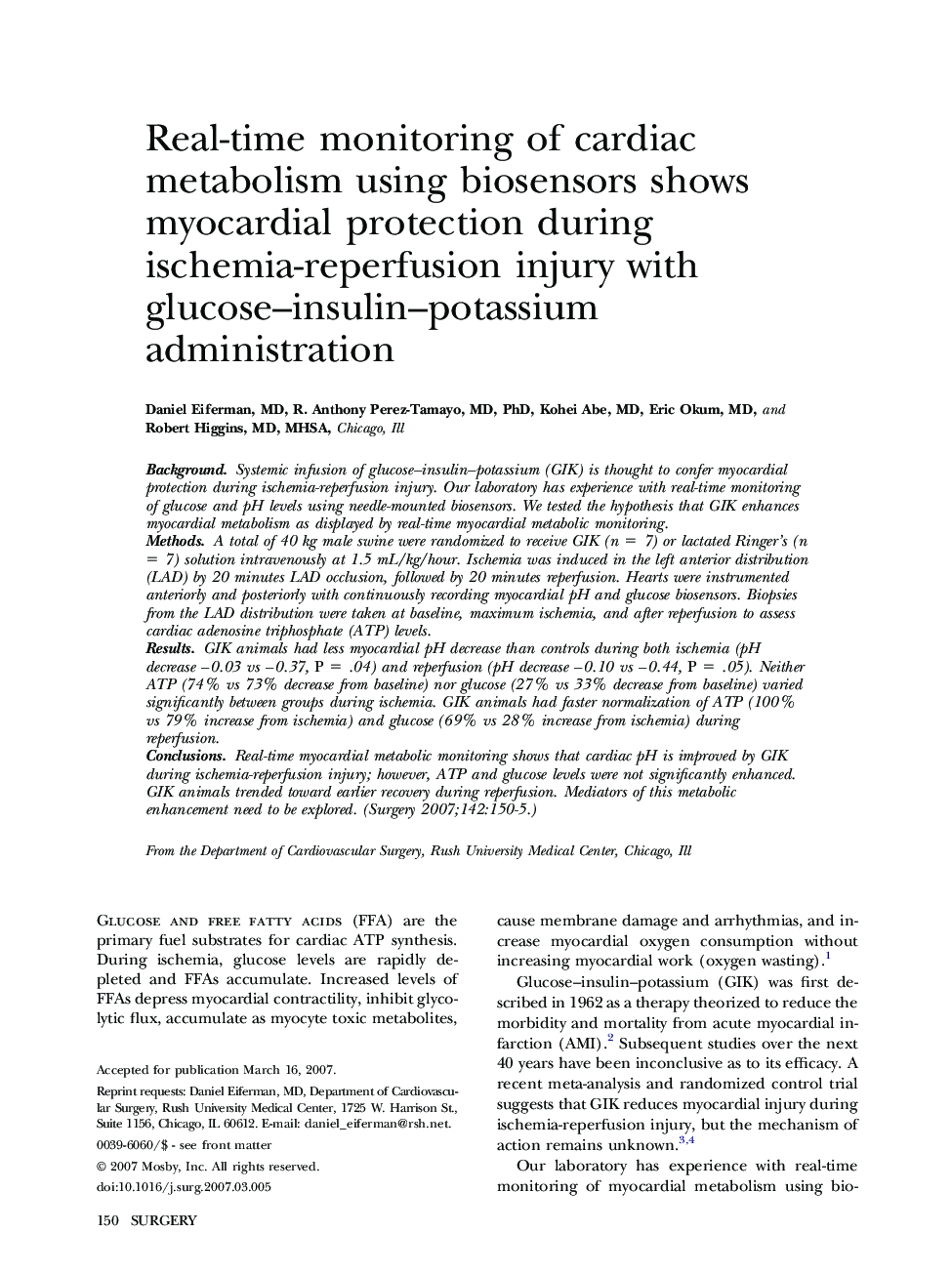| Article ID | Journal | Published Year | Pages | File Type |
|---|---|---|---|---|
| 4310324 | Surgery | 2007 | 6 Pages |
BackgroundSystemic infusion of glucose–insulin–potassium (GIK) is thought to confer myocardial protection during ischemia-reperfusion injury. Our laboratory has experience with real-time monitoring of glucose and pH levels using needle-mounted biosensors. We tested the hypothesis that GIK enhances myocardial metabolism as displayed by real-time myocardial metabolic monitoring.MethodsA total of 40 kg male swine were randomized to receive GIK (n = 7) or lactated Ringer’s (n = 7) solution intravenously at 1.5 mL/kg/hour. Ischemia was induced in the left anterior distribution (LAD) by 20 minutes LAD occlusion, followed by 20 minutes reperfusion. Hearts were instrumented anteriorly and posteriorly with continuously recording myocardial pH and glucose biosensors. Biopsies from the LAD distribution were taken at baseline, maximum ischemia, and after reperfusion to assess cardiac adenosine triphosphate (ATP) levels.ResultsGIK animals had less myocardial pH decrease than controls during both ischemia (pH decrease –0.03 vs –0.37, P = .04) and reperfusion (pH decrease –0.10 vs –0.44, P = .05). Neither ATP (74% vs 73% decrease from baseline) nor glucose (27% vs 33% decrease from baseline) varied significantly between groups during ischemia. GIK animals had faster normalization of ATP (100% vs 79% increase from ischemia) and glucose (69% vs 28% increase from ischemia) during reperfusion.ConclusionsReal-time myocardial metabolic monitoring shows that cardiac pH is improved by GIK during ischemia-reperfusion injury; however, ATP and glucose levels were not significantly enhanced. GIK animals trended toward earlier recovery during reperfusion. Mediators of this metabolic enhancement need to be explored.
